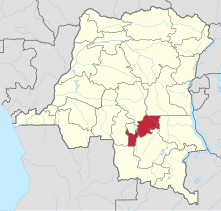Katanga Province
This articleneeds additional citations forverification.(October 2021) |
Katanga Province
Province du Katanga | |
|---|---|
 Congo provinces in 1914 | |
| Coordinates:09°S26°E/ 9°S 26°E | |
| Country | |
| Established | 1966 |
| Dissolved | 2015 |
| Capital | Lubumbashi |
| Largest city | Lubumbashi |
| Area | |
| • Total | 496,871 km2(191,843 sq mi) |
| Population (2010 est.) | |
| • Total | 5,608,683 |
| • Density | 11/km2(29/sq mi) |
| Demonym | Katangese |
| Official: | French |
| National: | Swahili |
| Other: | English |
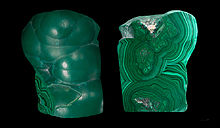
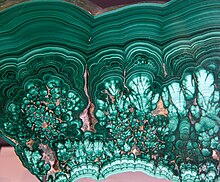
Katangawas one of the four large provinces created in theBelgian Congoin 1914. It was one of the elevenprovinces of the Democratic Republic of the Congobetween 1966 and 2015, when it was split into theTanganyika,Haut-Lomami,Lualaba,andHaut-Katangaprovinces. Between 1971 and 1997 (during the rule ofMobutu Sese Sekowhen Congo was known asZaire), its official name wasShaba Province.[1]
Katanga's area encompassed 497,000 square kilometres (192,000 sq mi). Farming and ranching are carried out on theKatanga Plateau.The eastern part of the province is a rich mining region which suppliescobalt,copper,tin,radium,uranium,anddiamonds.The region's former capital,Lubumbashi,is the second-largest city in the Congo.[2][3]
History
[edit]Copper miningin Katanga dates back over 1,000 years, and mines in the region were producing standard-sizedingotsof copper for international transport by the end of the 10th century CE.[4]
In the 1890s, the province was beleaguered from the south byCecil Rhodes'Northern Rhodesia,and from the north by theBelgian Congo,the personal possession of KingLeopold II of Belgium.Msiri,the King of Katanga, (no such title exist, Msiri is a title for local authority in area controlled by Kazembe) held out against both, but eventually Katanga was subsumed by the Belgian Congo.[5][page needed]
After 1900, theSociete Generale de Belgiquepractically controlled all of the mining in the province throughUnion Minière du Haut Katanga(UMHK). This includeduranium,radium,copper,cobalt,zinc,cadmium,germanium,manganese,silver,gold,andtin.
In 1915, a deposit ofpitchblendeand other uranium minerals of a higher grade than had ever been found before anywhere in the world and higher than any found since were discovered atShinkolobwe.The discovery was kept secret by UMHK. AfterWorld War Iended a factory was built atOlen;the secrecy was lifted at the end of 1922 with the announcement of the production of the first gram of radium from the pitchblende.[6]By the start ofWorld War II,the mining companies "constituted a state within theBelgian Congo".TheShinkolobwemine nearJadotville(nowLikasi) was at the centre of theManhattan Project.[7]

In 1960, after the Democratic Republic of the Congo (then called Republic of the Congo) gained independence from Belgium, the UMHK,Moise TshombeandGodefroid Munongosupported thesecessionof Katanga province from the Congo. This was supported by Belgium but opposed by the Congolese Prime MinisterPatrice Lumumba.This led to the assassination of Lumumba and theKatanga Crisis(or "Congo Crisis" ), which lasted from 1960 to 1965. The breakawayState of Katangaexisted from 1960 to 1963, then was reintegrated.[8]
In 2005, the new constitution specified that Katanga was to be split up into separately administered provinces.[9]
Militias such asMai Mai Kata Katangaled byGédéon Kyungu Mutangafought for Katanga to secede, and his group briefly took over the provincial capitalLubumbashiin 2013.[8]
In 2015, Katanga Province was split into the constitutional provinces ofTanganyika,Haut-Lomami,Lualaba,andHaut-Katanga.[10][11]
Economy
[edit]Copper mining is an important part of the economy of Katanga province.[12]Cobalt mining by individual contractors is also prevalent. A number of reasons have been advanced for the failure of the vast mineral wealth of the province to increase the overallstandard of living.The local provincial budget was US$440 million in 2011.[13][14]
Mining
[edit]Lubumbashi,the mining capital of the Democratic Republic of Congo, is a hub for many of the country's biggest mining companies. The Democratic Republic of Congo produces "more than 3 percent of the world’s copper and half itscobalt,most of which comes from Katanga ".[15]
Major mining concessions includeTilwezembeandKalukundi.
Mining companies
[edit]- Gécamines,(La Générale des Carrières et des Mines,the former UMHK), the state-owned copper-cobalt mining company, had monopoly concessions in the province.
- Katanga Mining LtdTSX:KAToperates a major mining complex in Katanga province, producing refined copper and cobalt with the "potential of becoming Africa’s largest copper producer and the world’s largest cobalt producer".[16]Katanga Mining Ltd is majority-owned by SwisscommoditytraderGlencore DCC.[17]Ajoint ventureof Katanga Mining (75%) and Gécamines (25%) began miningTilwezembe,an open-pit copper and cobalt mine, in 2007.[18]
Geography
[edit]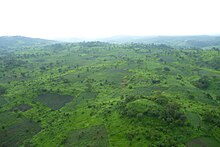
The province bordered Angola and formed the entire Congolese border with Zambia. It also bordered Tanzania – although onLake Tanganyikarather than on land. Katanga has a wet and dry season. Rainfall is about 1,200 mm (49 in).[19]
The province was divided in 2015 into five successor provinces, based on the districts of Katanga at that time:
-
Haut-LomamiProvince
Education and medical care
[edit]TheUniversity of Lubumbashi,located in the northern part of Lubumbashi city, is the largest university in the province and one of the largest in the country.
TESOL, the English Language School of Lubumbashi, is a secondary school that serves the expatriate community. It was founded in 1987 on the grounds of the French School, Lycée Français Blaise Pascal, which suspended operations in 1991 with a new French School starting in 2009.[20]
Katanga province has the highest rate ofinfant mortalityin the world, with 184 of 1000 babies born expected to die before the age of five.[21]
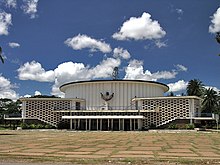
Transportation
[edit]TheCongo Railwayprovides Katanga Province with limited railway service centered onLubumbashi.Reliability is limited.Lubumbashi International Airportis located northeast of Lubumbashi. In April 2014, atrain derailmentkilled 63 people.[22]
People
[edit]- Laurent-Désiré Kabila,former president of the Democratic Republic of the Congo
- Moise Tshombe,former president of the breakaway State of Katanga
- Barbara Kanam,popular singer
- Frédéric Kibassa Maliba,former opposition leader and president of UDPS
- Odilon Kafitwe wa pa Bowa,former national minister of Zaire and leader of UFERI
- Lunda Bululu,former prime minister of Zaire
- Godefroid Munongo,politician
See also
[edit]- Central African Copperbelt
- Congo Free State
- Congo Pedicle
- List of governors of Katanga
- Lubumbashihistoryandtimeline
- Msiri
- Stairs Expedition to Katanga
- State of Katanga
References
[edit]- ^"Katanga | province, Democratic Republic of the Congo".Encyclopedia Britannica.Archivedfrom the original on 27 February 2018.Retrieved26 February2018.
- ^George, Mr Francis Stevens (6 February 2014).China and Africa Love Affair.Francis Stevens George.ISBN9781494998516.Archivedfrom the original on 23 September 2022.Retrieved18 October2020.
- ^"Biggest Cities in the Democratic Republic of the Congo".WorldAtlas.Archivedfrom the original on 27 February 2018.Retrieved26 February2018.
- ^McKenna, Amy, ed. (2011).The History of Central and Eastern Africa.Britannica Guide to Africa. Rosen Education Service. p.9.ISBN978-1615303229.
- ^Crawford, Daniel (1912).Thinking Black: 22 Years Without a Break in the Long Grass of Central Africa.New York: George H. Doran.
- ^Uranium's scientific history - Part 2
- ^Williams, Susan(2016).Spies in the Congo.New York: Public Affairs. pp. 76–77, 289.ISBN9781610396547.
- ^abJullien, Maud (12 August 2013)."Fighting for DR Congo's cash cow to secede".BBC Africa.Archivedfrom the original on 8 January 2015.Retrieved16 January2019.
- ^"Constitution de la République démocratique du Congo: Article 2".Wikisource.Archivedfrom the original on 25 October 2011.Retrieved24 May2016.
- ^The National Assembly adopts the laws regarding the limits of the provinces in the Democratic Republic of the CongoArchived27 January 2015 at theWayback Machine,National Assembly of the Democratic Republic of the Congo,10 January 2015.(in French)
- ^Election of governors: definite results expected on 18 AprilArchived28 March 2016 at theWayback Machine,Radio Okapi,27 March 2016.(in French)
- ^"COPPER".congo-pages.org.Archivedfrom the original on 3 March 2016.Retrieved23 October2015.
- ^"Katanga: le budget 2011 s'élève à 396 milliards de Francs congolais".Radio Okapi. 21 September 2010. Archived fromthe originalon 23 July 2012.
- ^The State vs. the People: Governance, mining and the transitional regime in the Democratic Republic of Congo(PDF)(Report). Amsterdam: Netherlands Institute for Southern Africa. 2006.ISBN90-78028-04-1.Archived(PDF)from the original on 8 May 2013.Retrieved25 March2013.
- ^Kavanagh, Michael J. (23 March 2013)."Congolese Militia Seizes UN Compound in Katanga's Lubumbashi".Archivedfrom the original on 25 March 2013.Retrieved23 March2013.
- ^"History: dead link".Katanga Mining. Archived fromthe originalon 10 November 2011.Retrieved16 November2011.
- ^Katanga Mining(Report). Archived fromthe originalon 7 June 2011.Retrieved25 March2013.
- ^"An Independent Technical Report on the Material Assets of Katanga Mining Limited..."(PDF).SRK Consulting. 17 March 2009. Archived fromthe original(PDF)on 6 May 2012.Retrieved6 November2011.
- ^"Katanga, or Shaba (province, Democratic Republic of the Congo) – Britannica Online Encyclopedia".Archivedfrom the original on 25 July 2008.Retrieved23 June2022.
- ^English-speaking School of Lubumbashi (TESOL),page from 2007,Internet Archive,Accessed 3 March 2013.
- ^"DR Congo eyes a greater share of its mineral riches".BBC News Online.22 April 2012.Archivedfrom the original on 25 April 2012.Retrieved22 April2012.
- ^"Scores killed in DR Congo train crash".Al Jazeera.23 April 2014.Archivedfrom the original on 17 August 2014.Retrieved23 April2014.


